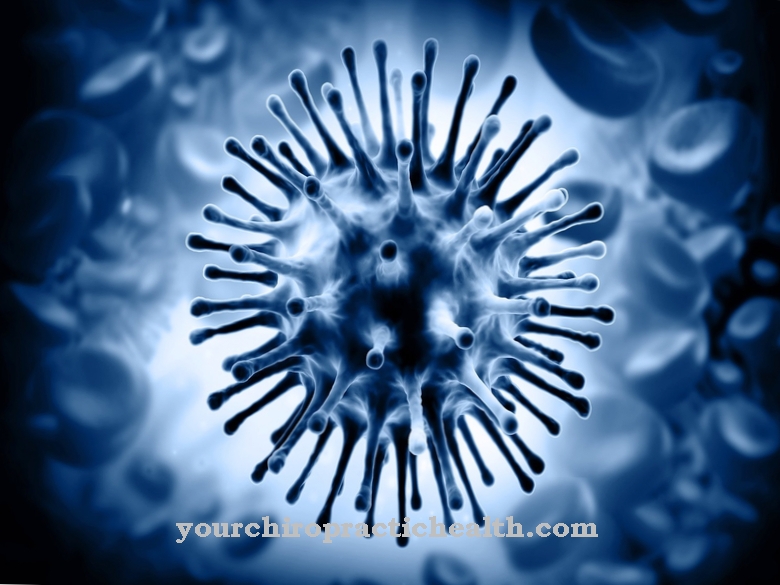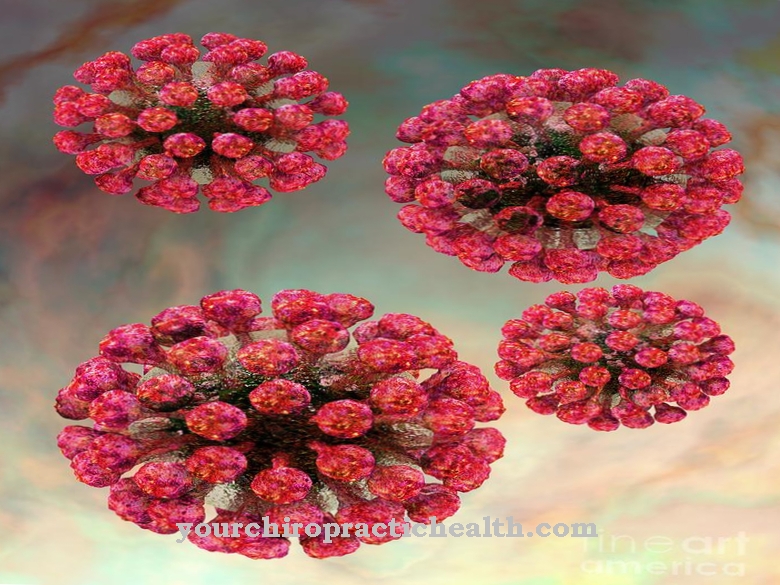The genus Candida includes numerous yeasts that humans can use biotechnologically. Heard like that Candida famata to the group of those fungi that, in addition to causing dangerous infections, can also be used to produce useful products such as riboflavin (vitamin B). Usually, however, it is a commensal, a companion of humans and other living beings, who lives relatively frugally on by-products and waste products of the metabolism.
What is Candida famata?
The genus Candida is one of the true yeasts of the Saccharomycetes class and can be assigned to the sac fungi. However, it does not form fruiting bodies, but exists as an asexual form of division that only changes into a sexual growth form (teleomorph) under certain environmental conditions.
For a long time, C. famata was listed as the anamorphic (asexual form) of a yeast called Debaryomyces hansenii and a distinction was made between the two varieties C. famata var flareri and C. famata var famata. These could, however, be genetically assigned to separate species, so that C. famata var flareri can now be assigned to the yeast Debaryomyces subglobosus as Candida flareri. Due to this separation, it must be checked whether all previous research statements regarding C. famata were really made for this species and not for the sister species.
The species is highly salt tolerant and grows in media up to 2.5 M NaCl. In addition, it has the ability to produce riboflavin in the event of iron deficiency (flavinogenic yeast).
Occurrence, Distribution & Properties
C. famata is common in the environment and is most easily obtained from processed foods, especially Cheese and other dairy products. It can also be found in a clinical context, where it is found primarily associated with the skin.
The yeast forms white to cream-colored round colonies with a smooth surface on agar. The cells are ovoid (2.0-3.5 x 3.5-5.0 µM) and do not form pseudohyphae. Instead, they multiply via budding or blastoconidia.
It is able to metabolize glucose, galactose, maltose, sucrose, trehalose, D-xylose, melezitose, glycerol, raffinose, cellobiose, L-arabinose and sugar alcohols. Negative assimilation tests are available for potassium nitrate and inositol.
An infection in the classic sense does not occur if an infection with C. famata occurs. Rather, in most cases the yeast grows completely unobtrusively on the skin of healthy people. Only when the immune system is weakened can a dangerous increase occur, which can then spread to the blood and other organs of those affected.
Meaning & function
The fact that C. famata produces increased amounts of riboflavin in iron deficiency can be explained by a survival advantage. The yeast presumably uses this substance as an electron donor for iron reduction or directly as a cofactor for extra- and intracellular enzymes.
The osmotolerance / halophilicity of this species can also be used by cultivating under high salt conditions. This allows competing microorganisms that can only tolerate lower salt levels to be displaced. In this way, a quasi-unsterile culture can be established. Since sterile technology is a significant cost factor for biotechnological processes, this increases the efficiency significantly when using C. famata.
The use of this yeast for riboflavin production is obvious, which has also been further optimized by genetic engineering (especially overexpression of the enzymes involved in riboflavin production). Other possible uses are in the synthesis of flavin mononucleotide (FMN) and dinucleotide (FAD).
Illnesses & ailments
Infections with C. famata usually follow the pattern of classic candidiasis, i.e. the skin and mucous membranes (e.g. in the mouth / digestive tract or genital area) are most commonly colonized. Lighter forms of only superficial candidiasis can often be observed as a result of changes in the skin or intestinal flora, e.g. after antibiotic treatments.
Hygienic deficiencies or incorrect use of skin-irritating cosmetics can also promote this form of infection. Furthermore, pregnancies or hormonal contraceptives can have an influence specifically on the vaginal environment and reduce its acidity, which results in less protection against the growth of yeasts.
Because it is a facultative pathogen, very severe infections are preceded by a strong weakening of the immune system by other diseases such as HIV, diabetes, cancer, sepsis or an immunosuppressive treatment with e.g. Cytostatics or cortisone.
C. famata can also penetrate the bloodstream and from there attack other organ systems up to the central nervous system. Further infections described resulted from catheter-borne systemic candidiasis, peritonitis, mediastinitis and acute zonal occult [[retinopathy] n.
The diagnosis is usually made microscopically from a smear or a culture from blood, urine or liquor. It has proven to be problematic here that the usual morphological / phenotypic identification of cultures obtained from infectious material sometimes leads to incorrect determinations. In this case, C. famata was often found even though the pathogen in question was a different Candida species. Due to the different susceptibility to antimycotics, this results in suboptimal treatment approaches.
Different therapies are used depending on the location of the infection: disinfecting ointments and sprays as well as mycostatically effective silver preparations can be used on the surface of the skin. In addition, you can treat the yeast like any other fungal infection with antimycotics. Locally, mainly Azoles such as clotrimazole or isoconazole are used, for systemic therapy one uses e.g. Ketoconazole, fluconazole, or nystatin. Particularly severe cases of organic infections can be treated with infusions of 5-fluorocytosine or amphotericin B.
The prevention of a C. famata infection is carried out in the same way as all other candidoses: Antimycotics can be used prophylactically in immunosuppressed patients. In the intimate area, under certain circumstances, the wearing of moisture-wicking underwear can improve the microclimate - this also applies to infants with a tendency to diaper candidosis.












.jpg)



.jpg)










.jpg)
